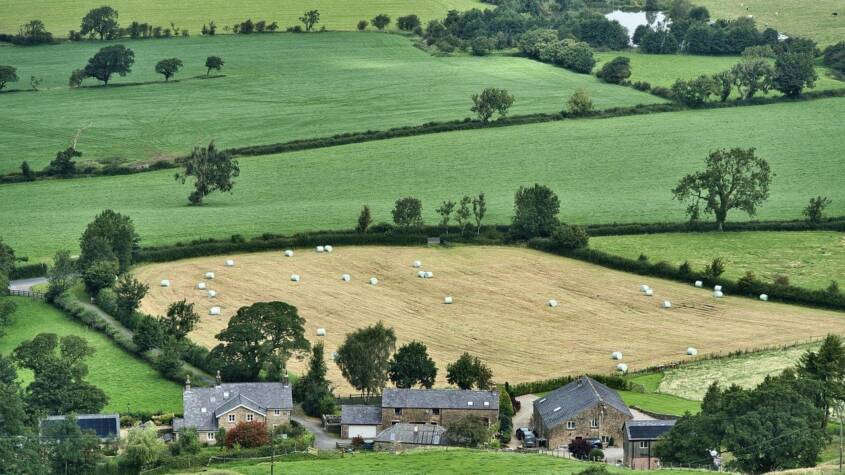
Ontario is home to a diverse array of farms that contribute significantly to the province’s economy and agricultural landscape. From sprawling cornfields to vibrant orchards, these farms produce a wide variety of crops and livestock, showcasing the richness of Ontario’s agricultural resources. The province ranks as one of Canada’s leading agricultural regions, known for its innovative farming practices and commitment to sustainability.
Farmers in Ontario face unique challenges and opportunities, including fluctuating market demands and the impact of climate change on crop yields. The use of advanced technology and sustainable practices helps them adapt and thrive in an ever-changing environment. Visitors to Ontario can explore these farms, gaining insight into operations that support both local communities and the broader economy.
Engagement with Ontario’s farming community offers a chance to taste fresh produce, learn about sustainable methods, and appreciate the vital role agriculture plays in daily life. Whether through agritourism or local markets, exploring Ontario’s farms reveals a deeper understanding of the connection between food production and the community.
Overview of Farms in Ontario
Ontario boasts a diverse agricultural landscape that plays a crucial role in both local and national economies. The province is home to various types of farms, a wide distribution across its regions, and significant economic contributions from this sector.
Types of Farms
Farms in Ontario can be categorized into several types based on their primary products. These include:
- Crop Farms: These dominate the agricultural landscape, producing grains, fruits, and vegetables. Corn and soybeans are staples, with significant production of strawberries and apples.
- Livestock Farms: These farms raise cattle, pigs, and poultry. Ontario is a major supplier of beef and pork in Canada.
- Dairy Farms: Ontario leads in dairy production within Canada, featuring numerous dairy operations contributing to milk, cheese, and yogurt production.
- Mixed Farms: Many farmers engage in both crop and livestock farming. This strategy enables them to diversify their income sources.
Distribution and Geographic Variation
The distribution of farms in Ontario reflects its varied geography. Agricultural activities are concentrated in certain regions:
- Southern Ontario: This area features rich soil and favorable climate conditions. It supports the highest concentration of farms, particularly in regions like the Niagara Peninsula and the Golden Horseshoe.
- Central and Northern Ontario: These regions tend to have fewer farms, focusing on niche farming due to their varied topography and climate, including some specialty crops and forestry activities.
- Eastern Ontario: Known for its grain and dairy farms, this area benefits from its proximity to major markets in Montreal and Ottawa.
Economic Impact
Farming significantly impacts Ontario’s economy. Key points include:
- Employment: Agriculture employs thousands in Ontario, providing jobs in farming and related industries such as food processing and retail.
- Revenue Generation: The agricultural sector contributes billions to Ontario’s GDP. Crop and livestock production supports local economies and industries.
- Exports: Ontario is a leading exporter of agricultural products, particularly grains and livestock. This position enhances trade relationships and boosts the province’s economic standing.
These elements collectively illustrate the importance of farms in Ontario, showcasing their diversity, geographical spread, and economic impact.
Agricultural Practices and Sustainability
Sustainable agricultural practices in Ontario focus on methods that enhance productivity while conserving resources. These practices are critical for maintaining the long-term viability of farming and protecting the environment.
Crop Rotation and Soil Management
Crop rotation is a fundamental practice in Ontario’s agriculture. Farmers alternate different crops on the same land to prevent soil nutrient depletion and reduce pest and disease cycles. Specific rotations, such as alternating legumes with grains, enhance soil nitrogen levels naturally.
Additionally, practices like cover cropping protect soil during off-seasons, improving structure and biodiversity. This method can mitigate erosion and promote soil health through organic matter addition.
Regular soil testing also plays a crucial role. It informs farmers of nutrient levels and pH balances, making it easier to apply fertilizers judiciously. These actions collectively contribute to increased yields and sustainable land use.
Livestock Welfare Practices
Animal welfare is integral to sustainable farming in Ontario. Farmers prioritize the health and wellbeing of livestock through better housing systems, proper nutrition, and veterinary care. Techniques like rotational grazing promote pasture health and allow for natural behaviors, enhancing animal comfort and productivity.
Transportation practices are also significant. Ontario farmers comply with strict regulations to ensure humane transport conditions. Stress reduction techniques during handling and transportation improve livestock health and meat quality, benefiting farmers economically.
Recognition of signs of distress and regular monitoring are essential aspects of welfare. By focusing on animal comfort, farmers can improve both yield and product quality aligned with sustainability goals.
Technological Innovations
Adoption of technology enhances agricultural sustainability in Ontario. Precision agriculture tools, such as GPS-guided tractors and drones, enable farmers to monitor crop health and optimize inputs. This technology reduces waste and increases efficiency.
Furthermore, data analytics allows farmers to make informed decisions based on weather patterns and soil conditions. Automated machinery and robotics are being integrated for tasks like planting, weeding, and harvesting, improving labor efficiency.
Sustainable energy practices also play a vital role. Implementing solar panels and wind turbines helps reduce the carbon footprint of farming operations. Collectively, these innovations support sustainable agricultural growth while ensuring economic viability for farmers.
Recycling Drop Off Locations: Find Convenient Sites for Sustainable Waste Disposal
Finding convenient recycling dropoff locations can greatly simplify the process of sustain…










